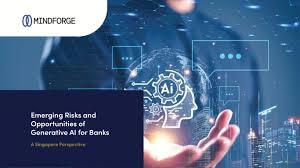Credit Unions vs. Banks: Credit unions face unique challenges in modernizing legacy systems due to investment capacity limitations, though they’re catching up quickly. Larger banks have prioritized digital experiences more aggressively.
AI Adoption: Since ChatGPT’s release in November 2022, AI adoption is accelerating in banking. Current applications include:

Fraud detection and prevention
Automating routine customer service inquiries (estimated 1/3 of call center volume)
Performing repetitive tasks that don’t require human intervention
Physical-Digital Balance: Surprisingly, 35% of banks and 61% of credit unions plan to expand branch networks in 2025, but this is “branch optimization” rather than net growth. Branch roles are evolving from transaction-focused to advisory and relationship-building.
Data Strategy Challenges: Many institutions lack a comprehensive data strategy, which limits their ability to leverage AI effectively. Banks need to create “immersive member experiences across integrated channels” with personalized, intelligent interactions.
Future Outlook: The most enormous opportunity is redefining the banking business model through technology – automating routine tasks, focusing human employees on high-value customer interactions, and creating personalized experiences.

Bank Modernization with AI: Analysis
Financial institutions are at a critical inflection point where AI integration has become essential rather than optional for maintaining competitiveness. Based on the article, here’s an analysis of how banks are approaching modernization with AI:

Current State of Implementation
- Uneven Adoption Landscape: There’s a clear divide between larger banks with greater investment capacity and smaller institutions like credit unions. This creates a tiered banking ecosystem where customer experiences vary significantly based on institution size.
- Focused Applications: Most current AI implementation focuses on:
- Fraud detection and risk management
- Automating routine customer service inquiries
- Back-office process automation
- Data Readiness Gap: Many institutions lack the foundational data infrastructure necessary for effective AI implementation. As Sievewright notes, “Many institutions do not have a data strategy, and many of them don’t have their data in a place where it can be accessed readily.”

Strategic Challenges
- Investment Prioritization: Banks face difficult decisions about where to allocate finite resources across competing priorities (core modernization, branch optimization, AI implementation).
- Risk Management: Fraud concerns are slowing real-time payment adoption, with Sievewright noting that “the fraud issue around real-time payments is palpable.” Ironically, AI tools are now being deployed to address these same security concerns.
- Workforce Transformation: The changing nature of banking roles requires significant reskilling. Branch employees need fewer transactional skills and more consultative capabilities, data literacy, and emotional intelligence.

Transformation Opportunities
- Humanized Technology: AI represents the first opportunity to truly “humanize” technology in banking. As Sievewright states, “We now have the opportunity to make technology feel human, look human, sound human.”
- Personalization at Scale: Advanced data analytics coupled with AI enables highly targeted customer interactions. Banks can move beyond generic product offerings to contextually relevant engagement based on actual customer behaviors.
- Business Model Reinvention: The most significant opportunity is reimagining core banking functions. Sievewright emphasizes that “we can redefine the business model of banking” by fundamentally changing how services are delivered and value is created.
Future Trajectory
- Integrating Physical and Digital: The continued investment in branches (35% of institutions expanding) alongside digital transformation reflects an emerging hybrid model rather than pure digitization.
- Operational Efficiency: AI will increasingly handle routine, repetitive tasks, allowing human employees to focus entirely on “valuable member or customer impact roles.”
- Immersive Experiences: The end goal is to create seamless, personalized banking across integrated channels—what Sievewright describes as “immersive member or customer experiences.”

The banking sector is moving beyond viewing AI as just another technology tool and beginning to recognize it as a fundamental driver of business transformation. However, successful implementation requires addressing underlying data infrastructure issues and making strategic investment decisions that balance immediate operational needs with long-term competitive positioning.
Maxthon
Maxthon has set out on an ambitious journey aimed at significantly bolstering the security of web applications, fueled by a resolute commitment to safeguarding users and their confidential data. At the heart of this initiative lies a collection of sophisticated encryption protocols, which act as a robust barrier for the information exchanged between individuals and various online services. Every interaction—be it the sharing of passwords or personal information—is protected within these encrypted channels, effectively preventing unauthorised access attempts from intruders.
Maxthon private browser for online privacyThis meticulous emphasis on encryption marks merely the initial phase of Maxthon’s extensive security framework. Acknowledging that cyber threats are constantly evolving, Maxthon adopts a forward-thinking approach to user protection. The browser is engineered to adapt to emerging challenges, incorporating regular updates that promptly address any vulnerabilities that may surface. Users are strongly encouraged to activate automatic updates as part of their cybersecurity regimen, ensuring they can seamlessly take advantage of the latest fixes without any hassle.

In today’s rapidly changing digital environment, Maxthon’s unwavering commitment to ongoing security enhancement signifies not only its responsibility toward users but also its firm dedication to nurturing trust in online engagements. With each new update rolled out, users can navigate the web with peace of mind, assured that their information is continuously safeguarded against ever-emerging threats lurking in cyberspace.
